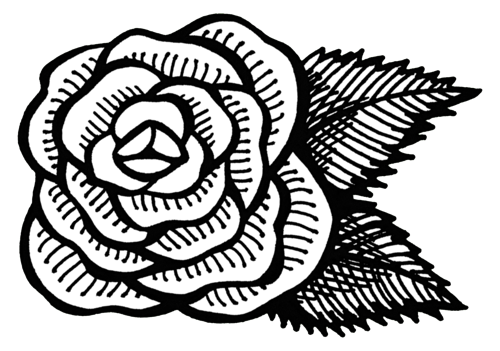This is the fourth post in a series of tarot study tips.
Death
Death is understandably one of the scariest cards in the deck for tarot newbies. You’ve probably heard it said before that Death is a positive card about change, growth, and transition, and that’s actually not bullshit. I view the card as more neutral than positive, but close enough. (We fortune tellers really fear the Happy Squirrel.)
For the sake of this exercise, we’ll view Death as representing transition and change in general, and in the context of the learning process, graduation, evaluation, unlearning, and lesson planning. These correspondences stem from spiritual views that individual consciousness continues after death, that the moment of death marks a passage from one state of being to another, and the life-is-a-classroom philosophy. You don’t have to believe these things personally to get something out of the metaphor. If this is challenging, it can be helpful to view the tarot landscape as a fantasy world with its own rules. In this world, there are Kings, Queens, magicians, and fantastical beasts, Death the figure is a character if not a deity, death the action is a rite of passage, and there are indeed worlds beyond the physical. Just like sinking into good fiction, we play with stories in the tarot world to shed light on our own.
Learning is cyclical, and the student’s path a spiral. We absorb courses of material, make progress, and mark accomplishments. Then we plateau, forget, and unlearn. Eventually we cycle back around to a point near where we began, but with a boost. Each time around with any given subject, we go deeper, understand better, and accomplish more. Death’s transition, like a graduation, marks the turning point between learning and unlearning, between one phase of lessons and the next.
After a period of growth, take stock of where you are in your tarot practice. Make one list of what you have learned and accomplished, then make another list of where you remain ignorant or wish to improve. When you meet a big goal, let yourself feel release. Give yourself a moment to enjoy and celebrate what you’ve learned well. Then get to the work that can only be done from the vantage point between a large goal just met and a new goal not yet attempted. If you find yourself in a plateau, know that’s part of the process and try to enjoy it for what it is without grasping at constant progress. Use the time to reflect on what you’ve done and what to tackle next. Think about what strategies have served you best in the past, what you’ve done particularly well, what mistakes you’ve made, and what you could have done even better. Use this information when you plan your next lessons.
Temperance
Temperance is a moderator, pouring the waters cup to cup until they combine evenly. She tempers extremes, mulling and working over disparate elements until they integrate harmoniously. She stands for moderation, and combining and thus transcending perceived dualities.
Each tarot card has many facets and potential meanings. Dualistic thinking can be a useful tool to break down some of these facets. To best understand and navigate a duality, first examine each side of it closely. To even two extreme water temperatures, you need to start standing with a cup of hot and a cup cold.
Try the following exercises:
PROS AND CONS
Divide a notebook page into three columns. Taking one card at a time, consider the imagery as dualistically as you possibly can, in simple terms of good versus bad. In the first two columns, bullet a brief pros and cons list of the positive and negative aspects of each card’s themes. Do this for all 78 cards. Then go back and look for the gray areas in between. Add points in the third column that fit within each card’s themes, but are neutral or compromise between the good and bad points.
COMMON GROUND
Divide all the cards in your deck into two piles: one for cards you view as generally positive, and one for cards you view as generally negative. Shuffle each pile, and turn them face down. Draw the top card from each pile. Find something the two cards share in common, and write it down. Place the cards you just drew at the bottom of their respective piles, and draw the next two top cards. Repeat until you’ve made it through each card at least once. Whichever pile has fewer cards will start to repeat, but that’s okay since they pair with fresh cards on the other side. The common ground you find should highlight a new facet of the repeat card. This is a great exercise for observing how the cards interact and change meaning when combined in different pairings and groups.
BLACK AND WHITE AND READ ALL OVER
Going card by card, scan every visual detail, listing all the polarities you can find in each illustration: black and white, big and small, above and below, hot and cold, good and evil, weak and strong, and so on. Now look at the card’s composition as a whole. What does the card’s broad composition tell you about the pairings it depicts? When read holistically, how does the card’s story uphold dualistic thinking? How does it undermine or resolve dualistic thinking?
The Devil
The Devil stands for the tribulations and temptations in life we most fear, loathe, avoid, and repress: oppression, extortion, manipulation, toxic materialism (becoming bound to the material at the expense of the emotional or spiritual), the Jungian shadow, and all things taboo. It’s vital, when considering the Devil in the tarot, to remember that just because we have this card in our decks doesn’t mean we revel in all it stands for. This is one of those cards that makes people viscerally fear and suspect the tarot. We need a range of cards to reflect all the varied scenarios we encounter in real life, just as we need words in our vocabulary to describe all we think and perceive. Having words for the Devil doesn’t make the English language evil. One can reflect on and warn against one’s demons without conjuring them, and contrary to what pop-horror might have us believe, one can pull the Devil card in a tarot reading without summoning the Beast to the table.
Let’s allow this card to remind us to face and examine our own demons. Riffle through your tarot deck, and pull out any cards that make you feel frightened or uneasy. Line them up in a row. Is there anything they have in common? Can you find any repeating patterns? Going card by card, list out what most unsettles you. Does the card’s imagery or description connect to a long held fear or trigger a painful memory? What other ways could you interpret this card that might mitigate or redirect difficult associations? Is the work of making peace with this card worth the reward of keeping it around? Can you learn to read it objectively in context without being overly influenced by personal triggers?
The point of this exercise is not to get lost in your worst memories, flood your boundaries, or corrupt yourself. No law requires you to make friends with any difficult cards, although there may be benefits to doing so. The point here is to gain a better understanding of each card by better understanding yourself, your baggage, and how you relate to each card on a gut level.
Finally, go card by card and list at least one example scenario that might call for this card to describe it. For now, don’t worry about finding a positive message or silver lining to your scariest cards. Don’t look for the positive, look for the use, and decide what it’s worth.
The Tower
A lightning-struck tower crumbles and falls. Some see a grand structure with a shallow foundation, or a tree that’s overgrown its roots burn and fall. Some see the Tower of Babel—a divine smackdown to mortal hubris. Some see the chemist’s catalyst trigger a dramatic reaction. Some see the best-laid plans about to fail. Even a fortress of stone can burn down, fall over, and sink into the swamp. Some see a licketty-split life change in the lightning strike, like losing a job or falling in love at first sight. The Tower shows destruction, sudden changes, and life events and emotional fallouts that shake us to our cores.
I read this card as destruction more than anything else, bearing in mind that sometimes destruction serves creation. A falling out within a toxic relationship can benefit everyone involved, no matter how painful in the moment. Losing a job can set you back on a better path, whether you can see it right then or not. With destruction comes release and the opportunity to rebuild better than before.
The Tower is a fantastic card in artistic work. Those moments when you scrap everything and start over can be infuriating, liberating, cathartic, and immensely fruitful. This doesn’t quite translate to our learning process though, does it? I doubt you’d get much out of tearing up your tarot notes and collaging them back together in a different order. Nope. In this context, we channel The Tower’s message not through a literal, physical act of destruction, but by shaking ourselves and our process up.
Abandon your foundations. Temporarily handicap yourself by hiding away your go-to decks and books, and pick up a new system entirely. For one month, box up all your go-to tarot decks, books, and notes. You can wrap them tenderly in reading cloths and fancy boxes if it makes you feel better, but tuck them away, and make it somewhere inconvenient, like the back of a closet, under your bed, or in the attic, so you won’t be overly tempted to fall right back on what you already know. Now keep your regular practice going, but with a new and unfamiliar set of tools. Put away the Rider Waite and pick up Thoth or Marseilles. Put away tarot entirely and switch to Lenormand, or tea leaves. You’re not really destroying or abandoning anything. You can have all your toys back at the end of the month. In the meantime, starting from scratch with a new system will refresh your beginner’s mindset, kick you out of any ruts, and inform your original tarot practice in unexpected ways.

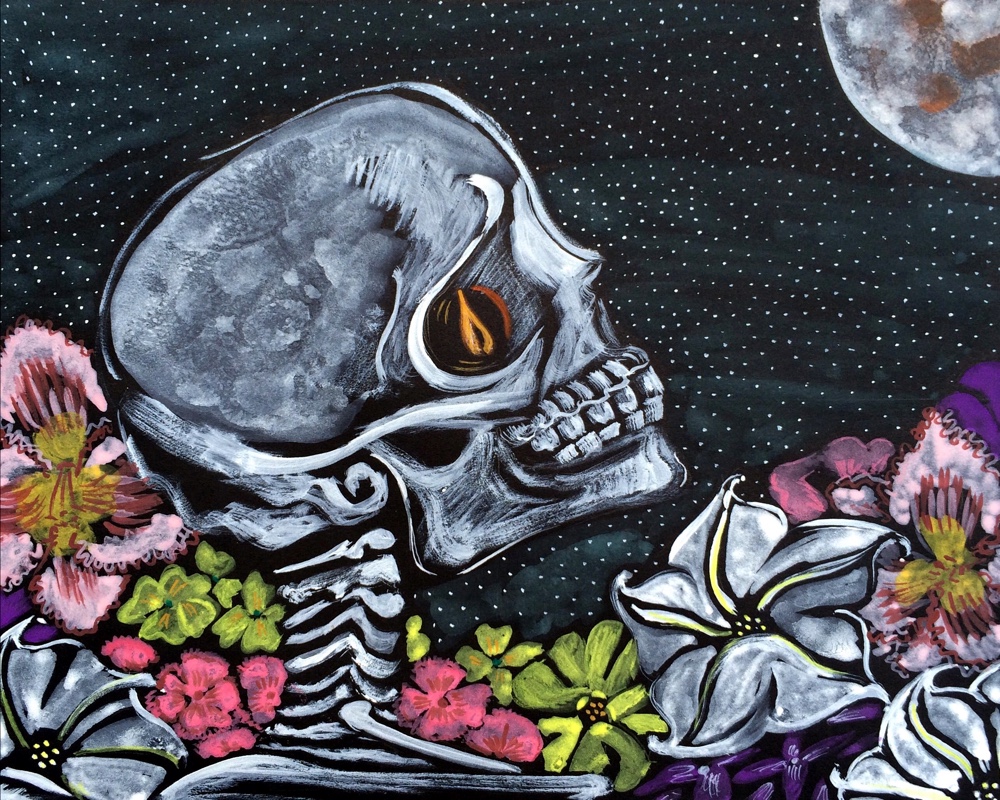

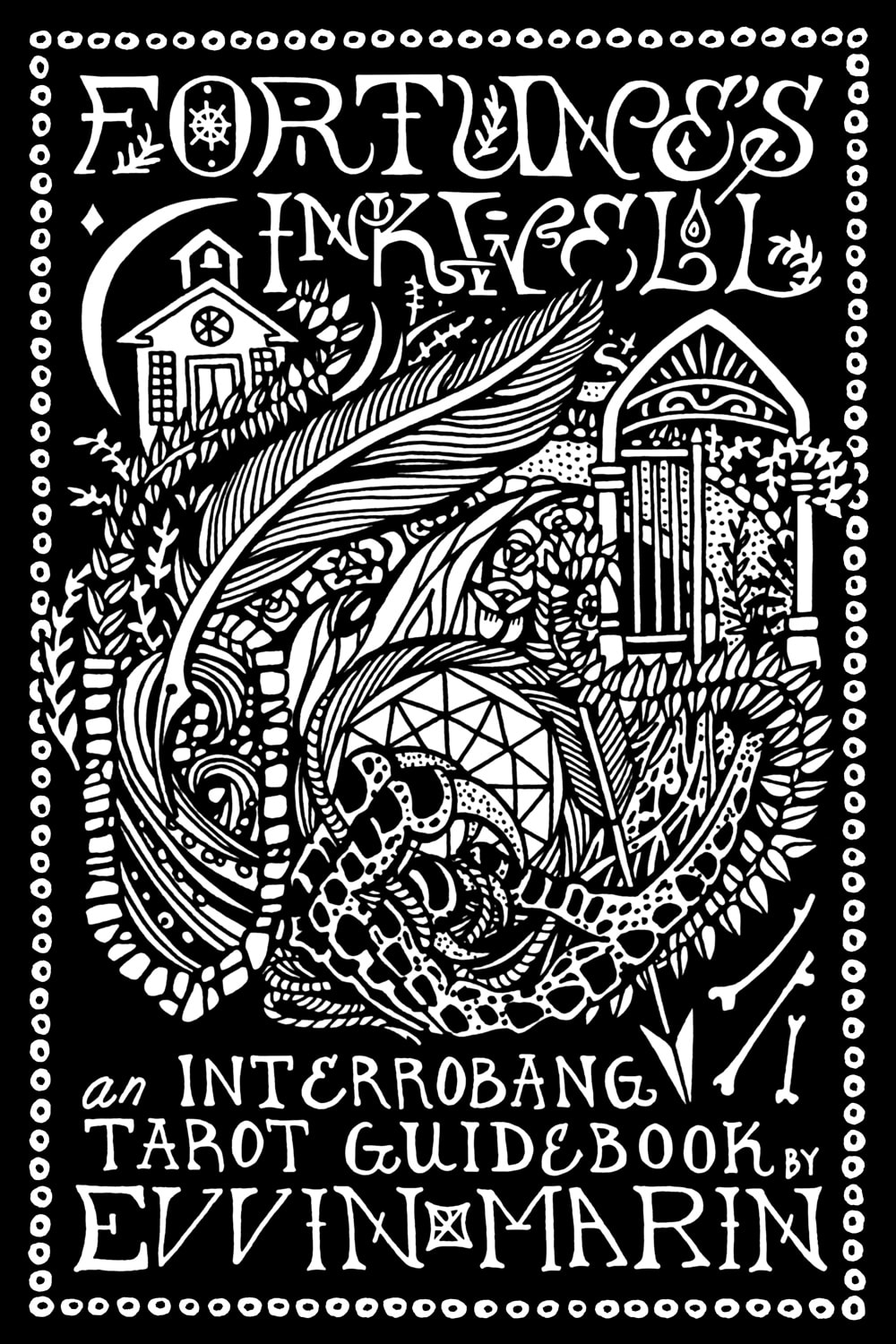
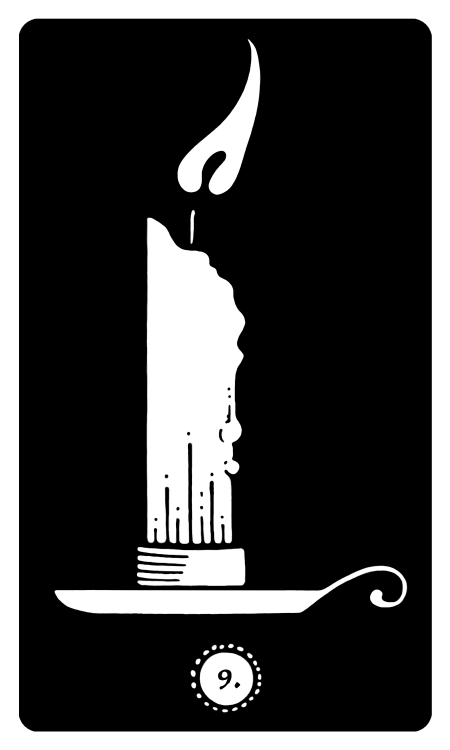
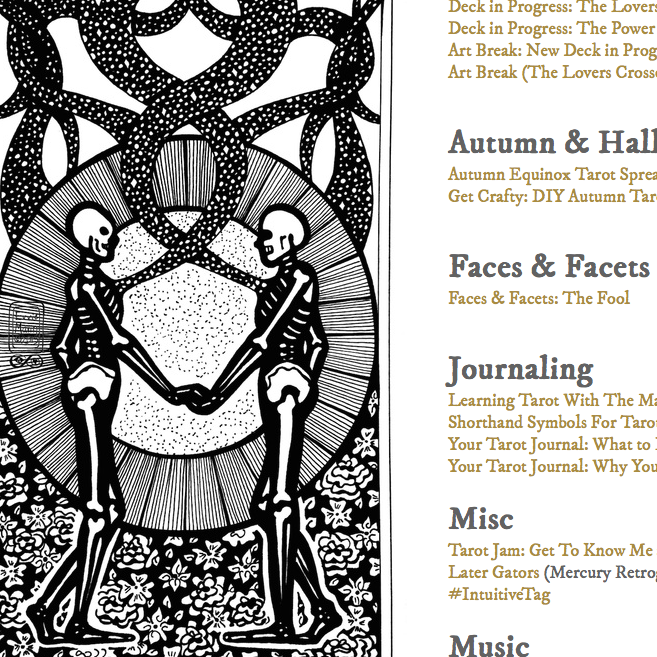
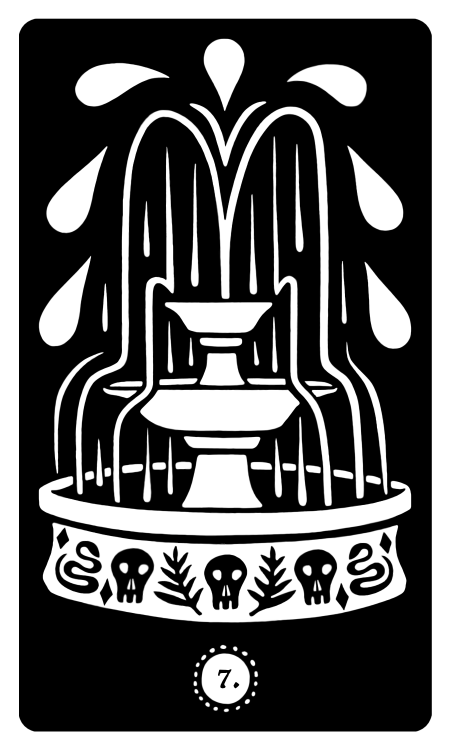
 RSS Feed
RSS Feed
